Cherry Blossoms 2014: Matsumae Report (5/8)
| Cherry Blossom Report 2014 Official cherry blossom reports by japan-guide.com |
| previous post |
| next post |
2014/05/08 - Matsumae Report
by sean
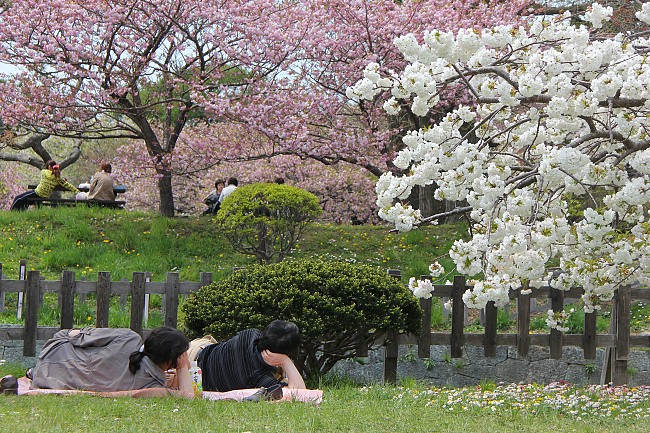
The year's cherry blossom season has entered its concluding phase with the sakura currently blooming in Hokkaido, Japan's northernmost prefecture. 2014 has been an early year for the cherry blossoms here so far: in many places across the prefecture they have beaten the average opening date by two to seven days.
My destination for the day was Matsumae. Located at the southern tip of Hokkaido, the city is home to the only Japanese style castle to have been built on the island. Each spring, the castle precincts and the adjacent Matsumae Park transform into a brilliant cherry blossom spot, boasting around 10,000 cherry trees of reportedly 250 varieties. The variance in blooming periods of the different varieties results in an extended cherry blossom viewing time frame here, typically starting in late April and ending in late May.
Matsumae Castle and Matsumae Park
May 8, 2014 - petals starting to fall (Somei Yoshino and Naden Zakura)
May 8, 2014 - full bloom (Slightly late-blooming varieties)
May 8, 2014 - just opened (0-10%) (Late-blooming varieties)
Of the many cherry trees at Matsumae Park, those of the Naden variety were the most numerous. These trees flower at around the same time as the mainstream Somei Yoshino, and today I found both the Naden and the Somei Yoshino to be quickly shedding their petals. Being a yaezakura (cherry blossoms having more than five petals), the Naden had the advantage of being able to lose more petals before becoming bald, and therefore they appeared to have fuller crowns when I visited earlier in the day. The season for these varieties will probably not last beyond the weekend.
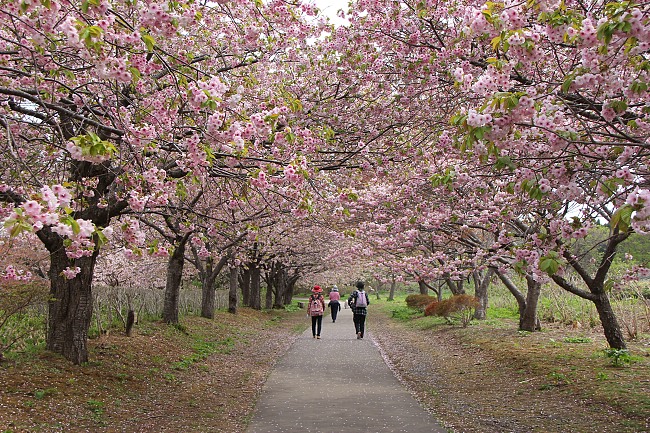
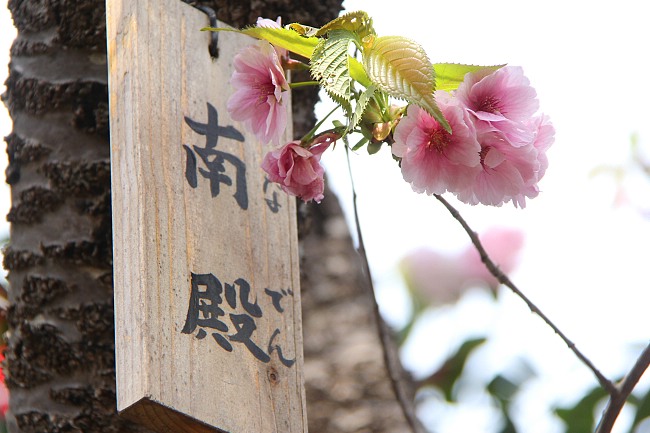
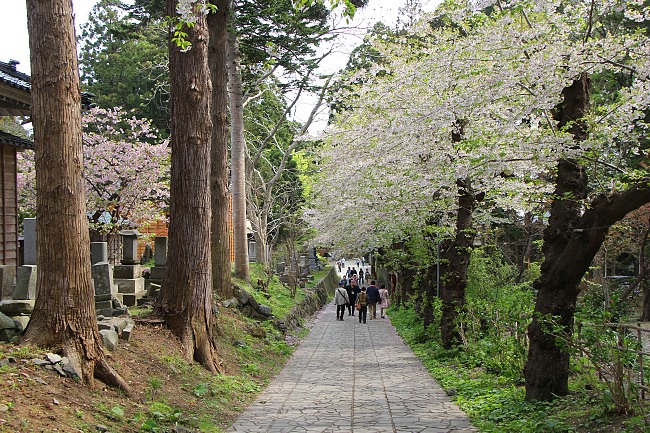
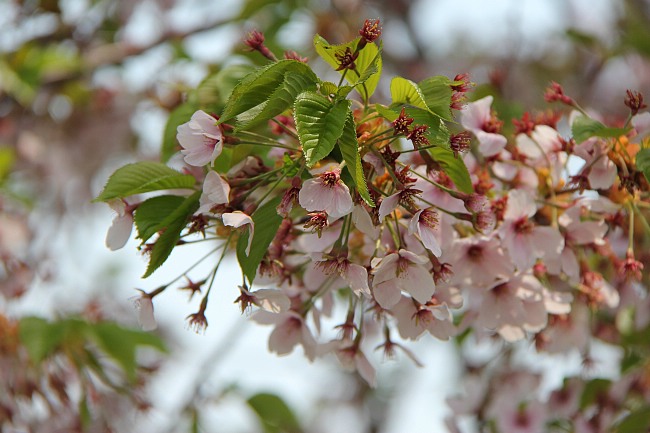
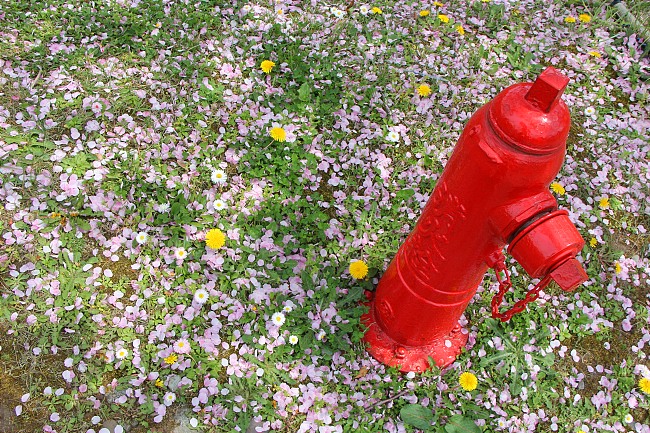
It was a pleasure to walk around the park observing the different cherry trees, which were mostly conveniently tagged with their names. This enabled me to learn more about one type called the Itokukuri cherry trees, which were also quite numerous at the site. At the time of my visit, the Itokukuri cherries were in their prime, along with another variety called the Amayadori. Views of these cherry blossoms will be good for another three to five days.
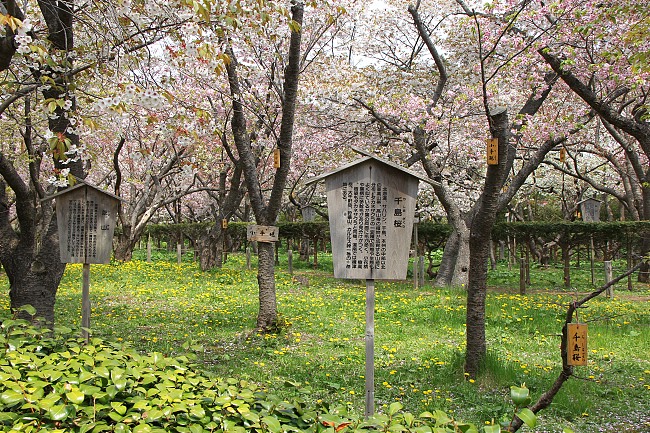
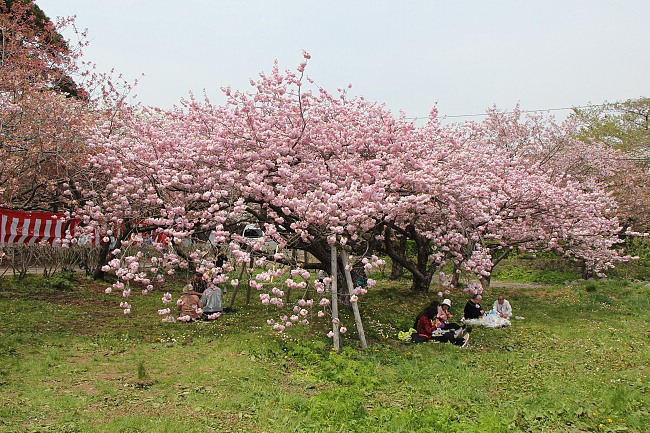

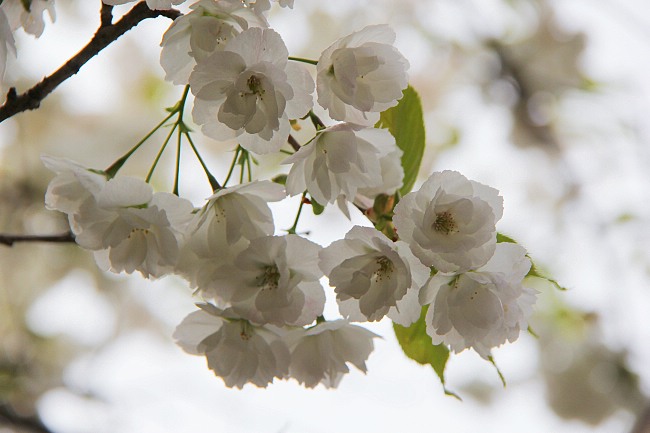
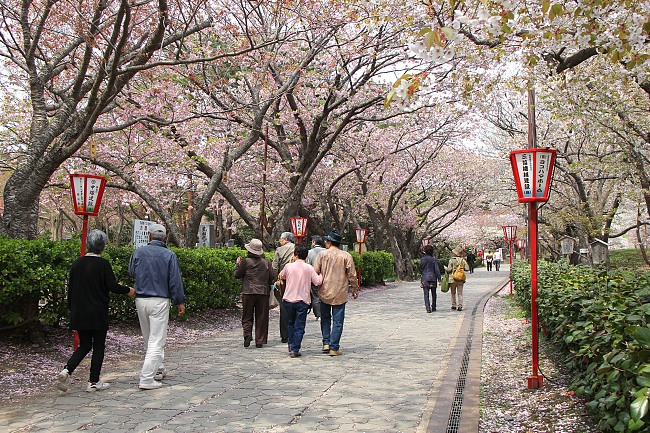
Meanwhile, even later blooming varieties like the Fugenzo, the Kanzan and the Shogetsu have barely started to open. These varieties should reach their best with another three days or so of warm weather.
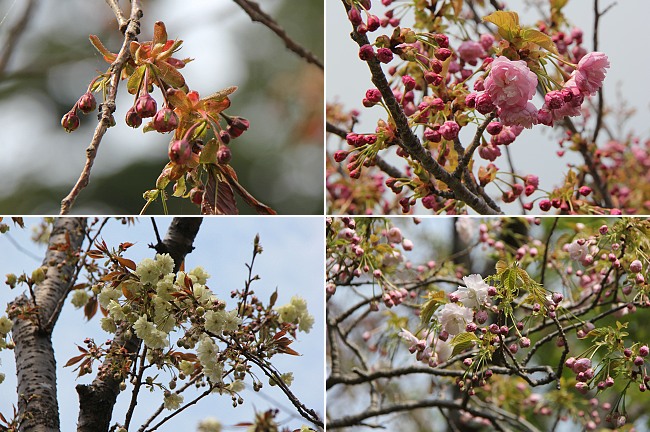
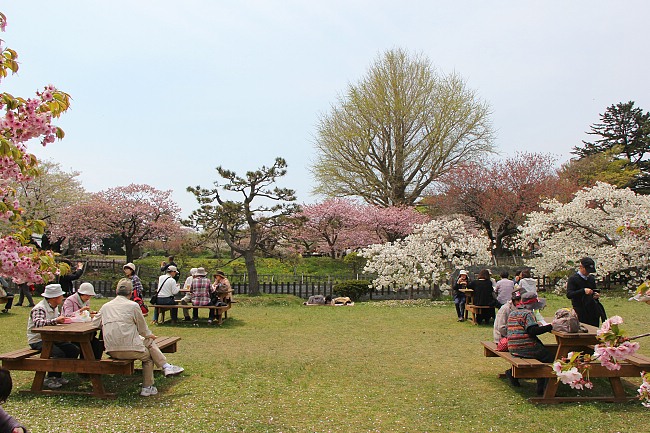
I continued my tour of the park - my spirits heightened by the pleasant smell of the nearby sea lingering in the air. There are three particularly famous trees at Matsumae Park: the Ezo Kasumi cherry tree at Ryuunin Temple, the Kechimyaku cherry tree at Kozenji Temple, and the Meoto cherry tree (husband and wife tree) at the southeastern gate of the castle, which is actually a Somei Yoshino and a Naden cherry tree co-existing seemingly as one.
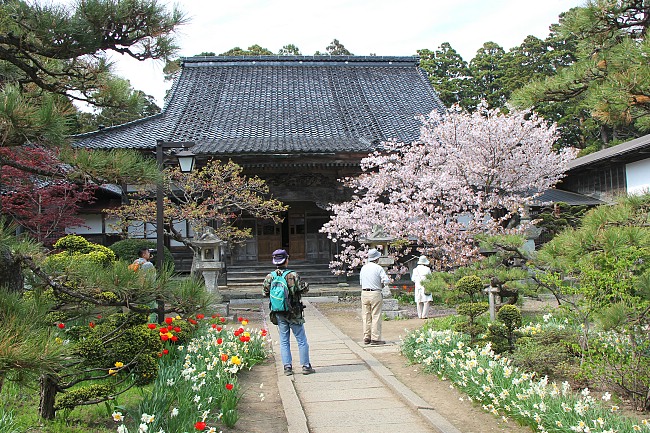
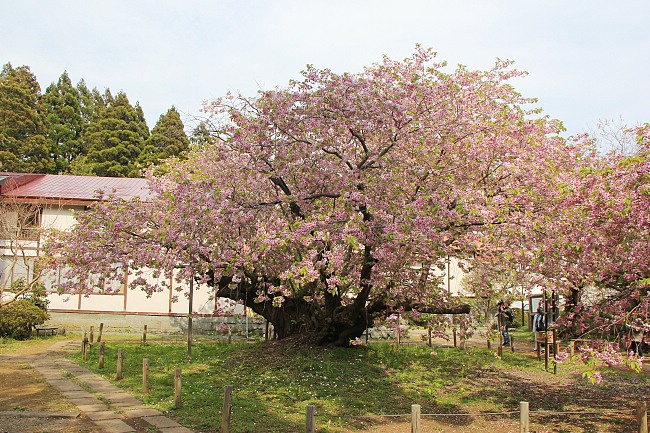
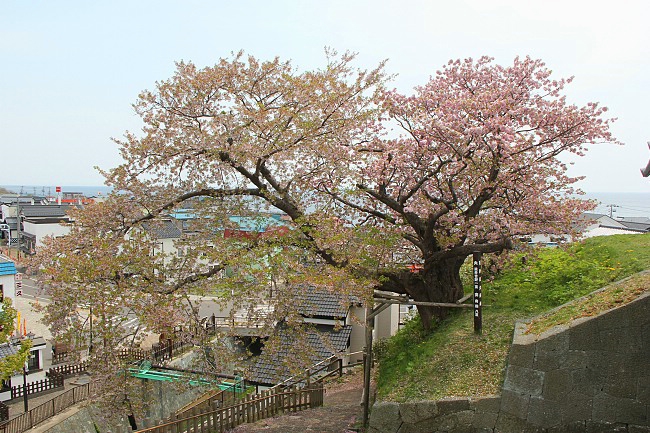
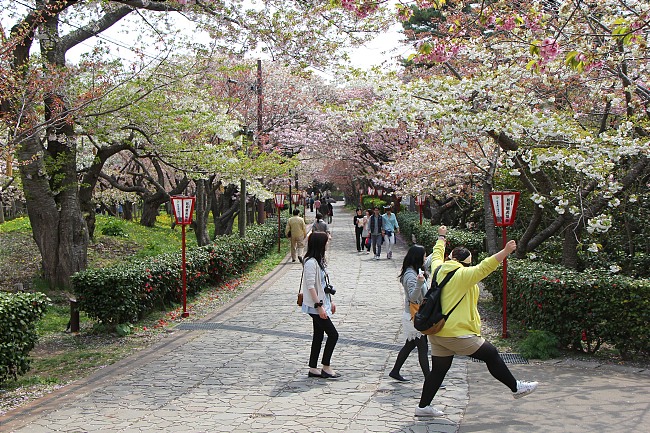
At the northern end of the Matsumae Park atop a hill, nice views can be seen of the park with the Tsugaru Straight in the background. I concluded the day with a visit to Matsumae Castle's keep, from where there were more views looking out to the sea.
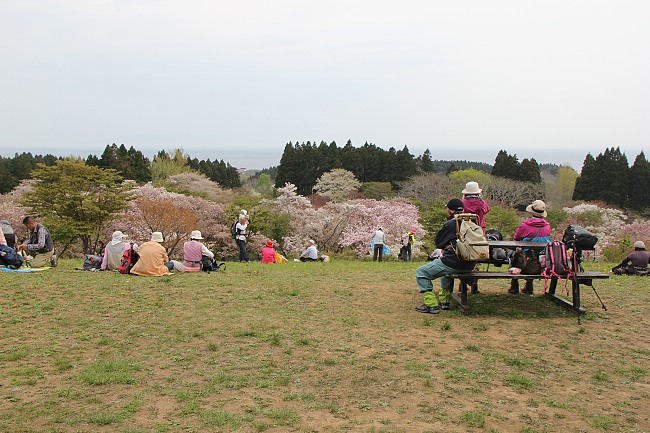
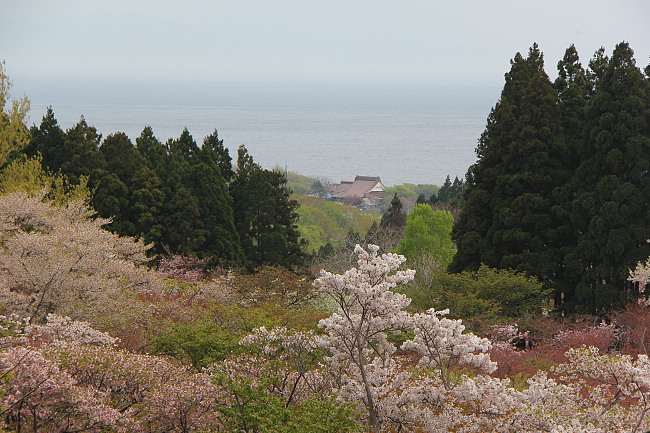
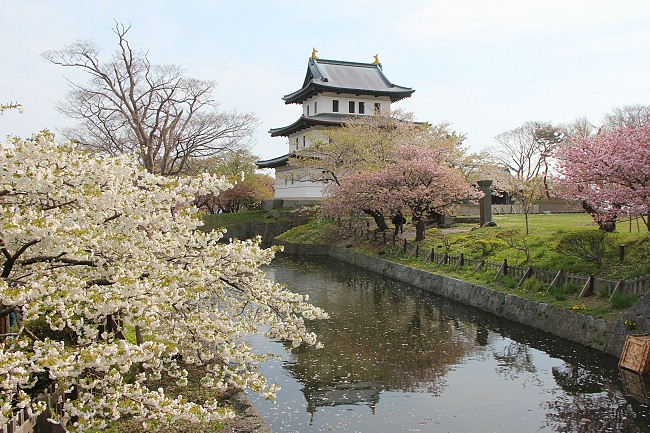
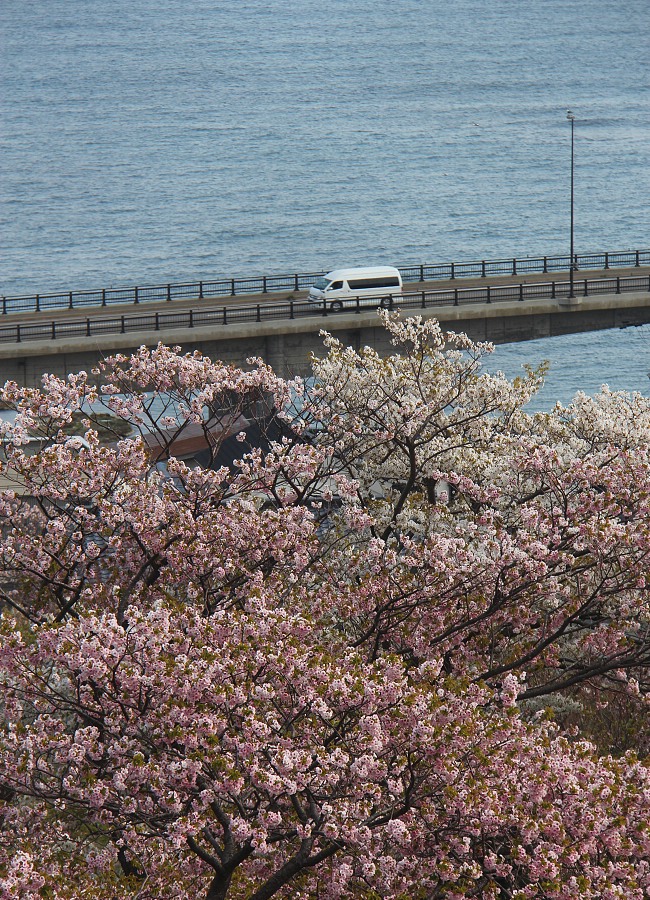
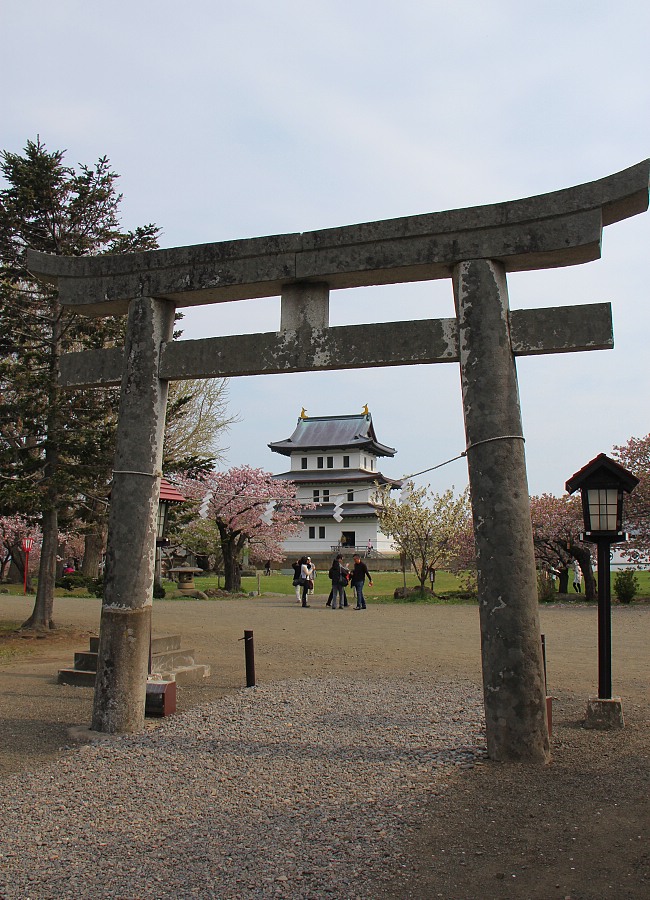
Matsumae is not connected to Japan's railway network. To get here, take a bus from Kikonai Station (1.5 hours, around 1300 yen, one bus every one to two hours). Some buses operate directly all the way between Matsumae and Hakodate (2.5 hours, around 2000 yen, two to three buses per day).
| previous post |
| next post |
Questions? Ask in our forum.


